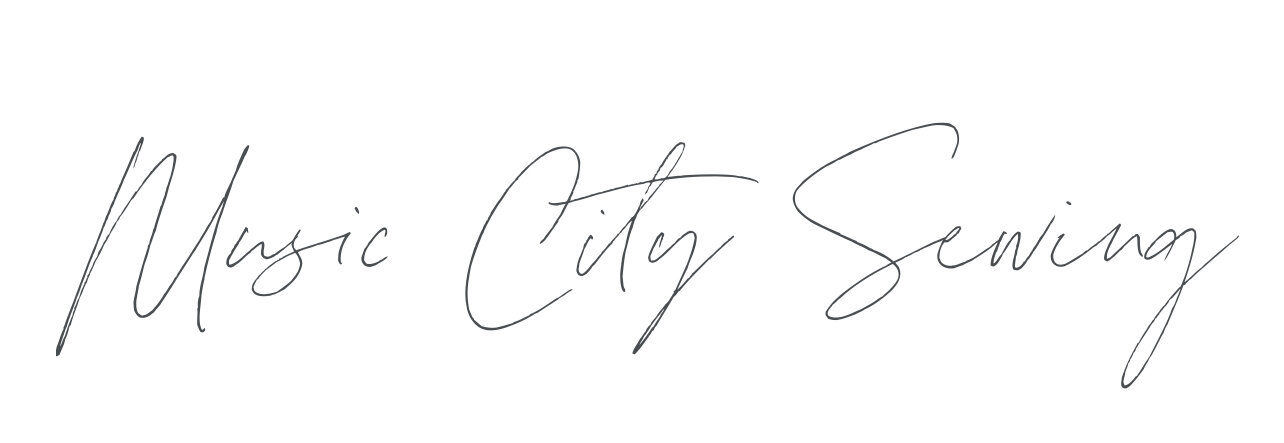What's in my mobile sewing suitcase
Every mobile seamstress has a go-list of items to pack.. this is mine!
Most of the time when I'm sewing on the go, I bring my sewing machine, steamer, portable ironing board, and Rowenta iron (1800 watt). When you have a choice, choose the mechanical sewing machine over the computerized one if you're on the go often. The more tech advances these days, the harder it gets, but it's just a piece of advice to keep in mind if you travel often. Plus, mechanical machines are cheaper to fix should something get dropped/knocked around in transport.
In the Pelican case
Sewing machine needles. Bring stretch, jersey, jeans, topstitch, ballpoint, twin needle, a universal in all sizes. There's no way of knowing what you're walking into. Even if there are YouTube videos of the tour to give you an idea of what you'll be sewing, you never know.. you might be making something from scratch. Having every needle option ensures you can fix a spandex leotard, repair the topstitching on jeans, and handle a tiny hem on a chiffon dress without any trouble. Oftentimes I've found I don't even end up working on show pieces- just stuff for the crew or personal items for the artist, so it's best to be prepared.
Test fabric. Anytime you move your sewing machine, you need to run it through its stitches before you start on a garment. This is more important for computerized machines than for mechanical ones, but either way it's good to test. The last thing you want is your machine eating someone else's clothes.. or worse, a delicate custom piece.
A huge bag of zippers. I pack invisible and regular, separating and double parks, and jean zippers too. I bring them in three different lengths and in about 7 to 10 different colors, with some skin tones thrown in. You don't always have a runner, and tours don't always get the chance to find and go to the local fabric store that they're in their city that day. Having all these things on hand makes the day go a lot faster and a lot less stressful because you're not waiting on anyone to go get these things for you. A $2 zipper or waiting 3 hours for a $2 zipper.. that's just my personal choice.
Bias tape. When I have it, I bring white, nude, and black. In my experience, I never want to go without these things anymore.. you just can't know when you're going to have to add a zipper to something really form-fitting, and having that one basic notion guarantees a pretty insertion without losing any necessary fabric to the zipper.
Thread scissors. I couldn't function without.
Seam ripper. Same here- must-have item
Hand sewing needles.
Thread. I bring as many thread colors as I can fit (all Gutermann), which is usually around 30 spools.
Wearable stage light. This one is my favorite- for everyone who's ever asked me where to find it, I order mine on amazon. I especially love that it doesn't burn through batteries like so many others do.
Velcro. whenever I have it, I bring it
Fabric scissors. (I don't bring my rotary blade because I never want to deal with hauling the mat around that goes with it. My solution for straight lines, is that I bring the hard ruler that I would normally use with my rotary blade/mat so that I can chalk the straight lines and then cut them with the fabric scissors).
Tailors chalk. I bring white and blue - red tends to stain and not come off as easily. Clover is my fave!
Measuring tapes. Two of them
Bobbins. both empty and full
Seam gauge.
Sewing machine cables.
Bandaids. Go ahead and laugh
Antiseptic burn spray. Keep laughing.. till you burn yourself on a rogue steamer
Extra pressed feet. I bring 3 rolled hem feet, a blind hem foot, a zipper foot, an invisible zipper foot, and a couple others just in case. Once again, you just never know what you're walking into.
Fray check. This stuff has saved my butt more than a handful of times, whether it's a slippery shoelace that doesn't want to stay tied or an unraveling chiffon, or a delicate little hole that can't get any bigger.
Elastic. Both braided and swimwear. I like to have everything I might need to get the job done, because time waisted sitting around and waiting for your supplies to arrive is infuriating when you're sewing an entire day's worth of projects in the final hour before show call because the runner waited all day for everyone's requests before fulfilling yours.
A bolster. you're going to be ironing, why not have it? A bolster makes the difference between a perfectly pressed shoulder curve and a weird crispy one.
A new pack of straight pins. Buy em in bulk and stop fighting to fit them all back in the original box.
Safety pins. I'm that weirdo who uses quilters pins instead of regular ones. I'm guessing it's because I grew up in a quilters household and it's what we had, but I've switched back and forth and found that the little bends allow for straighter lines. Don't ask me how.
Quick clips. Ask me how many times I've repaired shoes, thick items, and other things you just can't get a pin through.
Snaps. Both small and large (think: heavy duty ones that only come off when you realllyyy want them to)
Hooks and eyes. Both the straight bars and the eyes are good to have, in silver and white
So that's everything I bring to concerts to work, more or less. I'm the one setting off all the metal detectors, and requiring the metal detection wand and the spare set of hands to help carry all my stuff. It takes a lot to be prepared, right??





